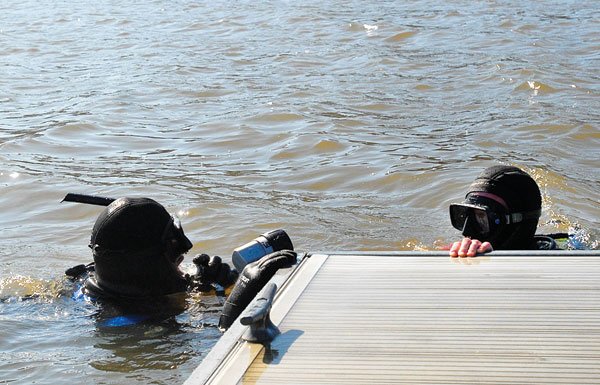Boaters who want to enjoy Santa Clara County reservoirs will
have to wait until at least May 23 in the wake of a vote by the
Santa Clara Valley Water District’s Board of Directors to ban
boating effective today until an inspection system for the invasive
Zebra and Quagga mussels can be put in place.
Boaters who want to enjoy Santa Clara County’s 10 reservoirs will have to wait until at least May 23 in the wake of a vote this week by the Santa Clara Valley Water District’s Board of Directors to ban boating until an inspection system for the invasive Zebra and Quagga mussels can be put in place.
Directors voted 4-3 Tuesday morning to issue the restriction which will prevent boaters from taking their vessels to Santa Clara County reservoirs to prevent the pesky shell fish from further invading area water bodies.
Tamara Clark-Shear, public information officer for the Santa Clara County Parks and Recreation Department, said the agency has created an inspection system to keep Zebra and Quagga mussels out of the reservoir because of water district concerns. The pests can ruin the infrastructure of the waterways, diminish water quality with a pungent odor and clog water lines.
Water district directors initially wanted to ban boating from all county reservoirs to prevent them becoming infested with the mussels.
Santa Clara County supervisors resisted the idea to ban the popular summer activity, with County Executive Pete Kutras stating that the water district has “ample funds to pay the cost of an inspection program …”
Clark-Shear said if supervisors approve her department’s inspection plan during their May 20 meeting, it can be put in place by May 23. The plan, which would charge boaters a $7 fee to pay for the cost of the $700,000 program, would have inspectors at boat launching areas at county reservoirs seven days a week to examine each boat for the mussels before the vessels could put into the water. Currently, it costs $12 to put a boat in the water, the additional charge would raise the price to $19.
However, boaters who used county reservoirs exclusively would not have to pay the fee or go through inspections provided a sealed band, placed between boat and trailer during an initial inspection, was still in place and sealed.
The inspections could take upwards of 10 minutes, according to Clark-Shear, and could initially create long lines. The lines are expected to taper off, she added, as boaters who stay on county reservoirs bypass inspections.
The water district and county officials are negotiating how much each will pay for the inspection program.
Susan Siravo, spokeswoman for the water district, said the temporary ban is not an attempt to squelch use of the reservoirs for recreation.
“The board of directors supports the use of the reservoirs for recreation, but the main purpose of the reservoirs is for water supply, to store water, to keep it high quality and healthy,” she said. “I hope at this point people can be understanding and patient. The county has said it will have the inspection program up and running by Memorial Day weekend, a little over a week away. I know the upcoming weekend is supposed to be a warm one, it’s unfortunate timing, but the reservoirs should be available for the rest of the summer.”
Mark Tarasco, a Gilroy resident, said the decision puts a damper on his plans.
“This is terrible,” he wrote in an e-mail. “I think Anderson Lake is a wonderful place. With gas prices so high, and the distance to other lakes, I think this will bring boating activities to a grinding halt. God forbid they end up closing the lakes because of a stupid mussel.”
Siravo said the district’s directors, who hotly debated the issue before the vote in favor of the temporary ban, are acting to protect the water supply and water users – and their wallets. Voting for the ban were Rosemary Kamei, Larry Wilson, Richard Santos and Joe Judge. Directors Sig Sanchez, Patrick Kwok and Tony Estremera voted against the ban.
“We know that the mussels usually come into the reservoirs from boats that have been in other infested reservoirs, they like to cling to hard services then drop off in the water,” Siravo said.
The problem is relatively new for California. Back in January, state officials confirmed the first known discovery of zebra mussels in San Justo Reservoir just outside of Hollister. A fisherman pulled up a clump of the mussels Jan. 5 from the reservoir and took them to fish and game officials. The agency had the California Department of Food and Agriculture test the mollusks to determine if they were the zebra mussel species.
An agency spokeswoman has said the California Department of Water Resources searched for the mussel in the Central Valley system after the discovery and could not find any.
Officials, however, found from an inspection that a pipe sending water from San Luis Reservoir to San Benito and Santa Clara counties sent water from the basin where invasive zebra mussels were found to local customers, San Benito County’s Water District has reported.















